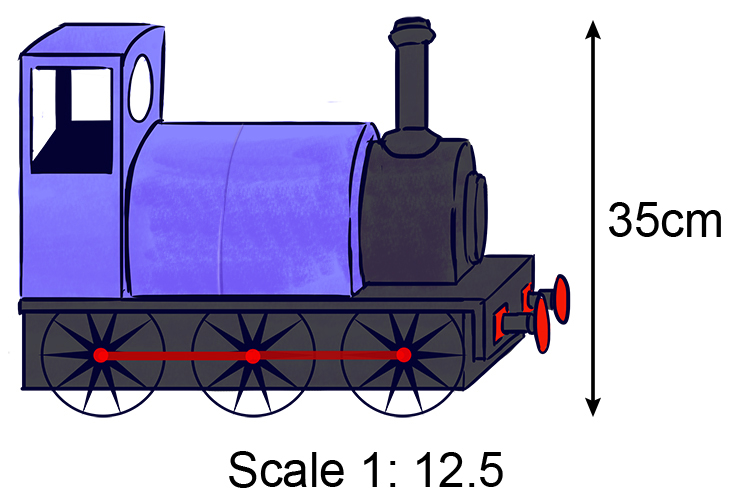Two part ratios
When you hear the word ratio you must try to remember the words "to every"
If something is `1` to `5` ratio you must read this as `1` to every `5`
A ratio shows how two numbers compare.
`x` to every `y`
To help you remember ratio is "to every" see below

Raise a toe (ratio) to every (to every) one.
Ratio `=` to every
There are several ways mathematicians express ratios
`5:1` ratio `=5` to every `1`
`5/1` ratio `=5` to every `1`
`5` to `1` ratio `=5` to every `1`
Example 1
A train has been built at a ratio of `1:12.5`. If the model train is `35cm` tall how tall is the real thing?

The ratio is `1` to every `12.5`
so `1cm` to every `12.5cm`
If `1=12.5`
then `35=x`
(treat this like all calculations in our percentages section)
Put a divide sign between them
`1/35=12.5/x`
rearranging
`x=(12.5times35)/1`
`x=437.5cm`
Answer:
The real train is `437.5cm` tall.
Example 2
To make biscuits you need `350\ grams` of wheat. This makes 22 biscuits. How many grams of wheat do you need to make 30 biscuits?
So the ratio is `22` biscuits to every `350\ grams` wheat.
`22=350`
Work out `1` biscuit
`1=x`
(treat this like all the calculations in our percentages section).
Put a divide sign between them
`22/1=350/x`
rearrange
`x=(350times1)/22`
`x=15.9\ grams` of wheat.
so the ratio is
`1` biscuit to every `15.9\ grams` of wheat
Now we can work out 30 biscuits.
`1=15.9`
`30=x`
(treat this like all the calculations in our percentages section).
Put a divide sign between them.
`1/30=15.9/x`
rearranging
`x=(15.9times30)/1`
`x=477\ grams`
Answer:
`477\ grams` make `30` biscuits.




